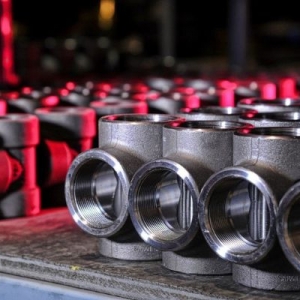Pipe Fittings play a crucial role in various industries and plumbing systems. They are essential components that enable the efficient and reliable transport of liquids, gases, and other substances through a piping network. Understanding why pipe fittings are used and their significance in plumbing and industrial applications can provide valuable insights into their functionality. In this article, we will explore the reasons behind the widespread use of pipe fittings and highlight their importance in ensuring safe and effective fluid flow.
Joining and Connecting Pipes:
Pipe fittings serve as connectors, allowing the joining of two or more pipes together. Pipes rarely come in lengths sufficient to cover the entire distance required, especially in complex plumbing systems or industrial setups. Fittings bridge the gaps and provide secure connections, ensuring a continuous and leak-free flow of fluids.
Directional Changes:
In many piping systems, the need for directional changes arises. Pipe fittings such as elbows, tees, and bends facilitate these changes by allowing pipes to turn and change their orientation without compromising the flow. By using fittings, the piping network can navigate around obstacles or fit into confined spaces while maintaining the required flow direction.
Diverting Flow:
Pipe fittings equipped with valves, such as gate valves, ball valves, or check valves, allow the control and diversion of fluid flow. These fittings enable the opening or closing of specific sections of a pipeline, redirecting the flow to different branches or shutting it off completely. This feature is particularly useful for maintenance, repair, or emergency situations.
Size Transition:
Pipe fittings are employed to connect pipes of different diameters or sizes. Adapters, reducers, and couplings enable the transition from a larger pipe to a smaller one or vice versa. This ability to change pipe sizes allows compatibility between various components of a piping system and facilitates the efficient distribution or collection of fluids.
Branching and Outlets:
In plumbing and industrial applications, it is often necessary to create branch lines from the main pipe to supply different areas or equipment. Fittings like tees and wyes provide outlets for this purpose, enabling the connection of secondary pipelines or devices. This branching capability ensures the efficient distribution of fluids to multiple locations within a system.
Flexibility and Ease of Installation:
One of the significant advantages of pipe fittings is their flexibility in design and ease of installation. They are available in a wide range of materials, including metals, plastics, and composite materials, catering to diverse requirements and compatibility with various substances. Additionally, fittings are designed for straightforward installation, allowing for quick modifications, repairs, or expansions in a piping network.
Conclusion:
Pipe fittings are indispensable components in plumbing systems and industrial applications. Their ability to connect, redirect, control flow, and accommodate changes in pipe size enables the efficient and reliable transport of fluids. By understanding why pipe fittings are used and their importance in maintaining fluid flow, we can appreciate their significance in creating functional and safe piping systems.
New Era Pipe Fittings is one of the leading Pipe Fittings Manufacturer in India. We also have a great reputation as being the finest pipe fittings suppliers and fittings manufacturers. This has earned us the reputation of being one of the most trusted Pipe Fittings Suppliers in Saudi Arabia and the most renowned Pipe Fitting Supplier in Malaysia.






